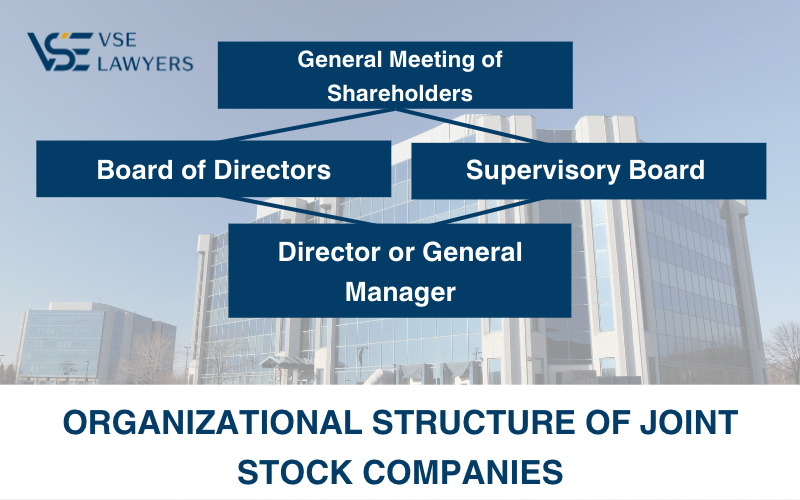ORGANIZATIONAL STRUCTURE OF JOINT STOCK COMPANIES
Joint stock companies appeared in the 17th century and flourished during the industrial revolution. At the beginning of the 18th century, this model became a common form of business organization in most countries with developed market economies. Understanding this type of business to operate it in Vietnam is imperative for investors.
03/06/2023

Joint stock companies appeared in the 17th century and flourished during the industrial revolution. At the beginning of the 18th century, this model became a common form of business organization in most countries with developed market economies. Understanding this type of business to operate it in Vietnam is imperative for investors.
I. About Joint Stock Company
A joint stock company is a type of enterprise in which the charter capital is divided into equal parts called shares. Shares will be owned by shareholders.
Shareholders can be individuals or organizations, and the profit that shareholders receive from owning shares is dividends. For debts and other property obligations of the enterprise, shareholders are only responsible to the extent of the amount of capital contributed to the enterprise
When fully meeting the factors to be considered a legal entity under Article 74 of the Civil Code 2015, the company is granted an Enterprise Registration Certificate. At this time, the company officially has legal status and can raise capital by issuing shares.
II. Organizational and management structure
Article 137 of the Enterprise Law 2020 stipulates that, unless otherwise provided for by the law on securities, a joint-stock company has the right to choose a management organization and operate according to one of the following two models:
a. Model 1:
- General Meeting of Shareholders;
- Board of Directors;
- Supervisory Board and Director or General Director. In case a joint-stock company has less than 11 shareholders and institutional shareholders own less than 50% of the total shares of the company, it is not required to have a Supervisory Board.
b. Model 2:
- General Meeting of Shareholders;
- Board of Directors;
- Director or General Manager.
In this case, at least 20% of the members of the Board of Directors must be independent members and have an Audit Committee under the Board of Directors. The organizational structure, functions and tasks of the Audit Committee are specified in the company's charter or the operation regulations of the Audit Committee promulgated by the Board of Directors.
Subscribe To Legal Advice from VSE Lawyers
If you would like to have any legal questions, please contact us for our advice




